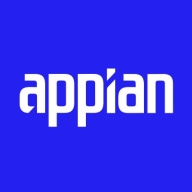

Appian and WebRatio are both competitors in the low-code application development category, each offering different advantages. Appian seems to take the lead with its robust process automation and comprehensive support, while WebRatio stands out for its flexibility and quick development cycles.
Features: Appian provides robust process automation, extensive integration abilities with third-party systems, and a focus on enterprise-grade security features. WebRatio offers ease of customization and flexibility, which allows developers to adapt software to specific business needs, making it ideal for unique solutions. Each has its standout capabilities, even though Appian emphasizes security and integration.
Ease of Deployment and Customer Service: Appian has a refined deployment process with strong professional support, making it well-suited for enterprises needing thorough assistance. WebRatio’s model highlights flexibility, allowing seamless system integration, suitable for businesses focusing on scalable solutions. Though Appian offers robust support, WebRatio excels in integration adaptability.
Pricing and ROI: Appian generally involves higher setup costs, justified by its detailed functionality and strong support, offering better long-term ROI where extensive automation is required. WebRatio's lower initial costs and focus on rapid development offer solid ROI potential for companies seeking quick, tailored solutions. There is a clear distinction in initial investment and long-term benefits, as Appian covers a wider scope while WebRatio highlights speed and customization.
| Product | Market Share (%) |
|---|---|
| Appian | 5.3% |
| WebRatio | 0.3% |
| Other | 94.4% |

| Company Size | Count |
|---|---|
| Small Business | 20 |
| Midsize Enterprise | 9 |
| Large Enterprise | 41 |
Appian is a unified low-code platform and solution used by businesses to build enterprise applications and workflows. This product adapts to the needs of clients and the technologies they are already using to combine their data in a single workflow and maximize resources. The platform has four main components through which it transforms the work process for companies of various sizes. They are:
Appian is utilized across a diverse set of industries, including automotive and manufacturing, energy and utilities, education, financial services, telecom and media, transportation, retail, insurance, healthcare, and life sciences. The most frequent use cases of Appian are customer journey, governance, risk and compliance, operational efficiency, supply chain, distributed order management, and environmental, social, and governance (ESG) management.
Appian Features
Appian has various features that allow users to create solutions for their businesses. These features can be separated into a few groups according to function, including automation, low-code application development, and integrations and data. Some of the most frequently used features of Appian include:
Appian Benefits
The benefits of using Appian include:
Reviews from Real Users
A practice leader - digital process automation at a computer software company values Appian highly because the product is easy to develop, low-code, and has a good user interface.
Alan G., an advisory board member at Codecon VR, Appian offers a clear application life cycle, easy to learn documentation, and comes with a fundamentals course.
We monitor all Business Process Management (BPM) reviews to prevent fraudulent reviews and keep review quality high. We do not post reviews by company employees or direct competitors. We validate each review for authenticity via cross-reference with LinkedIn, and personal follow-up with the reviewer when necessary.